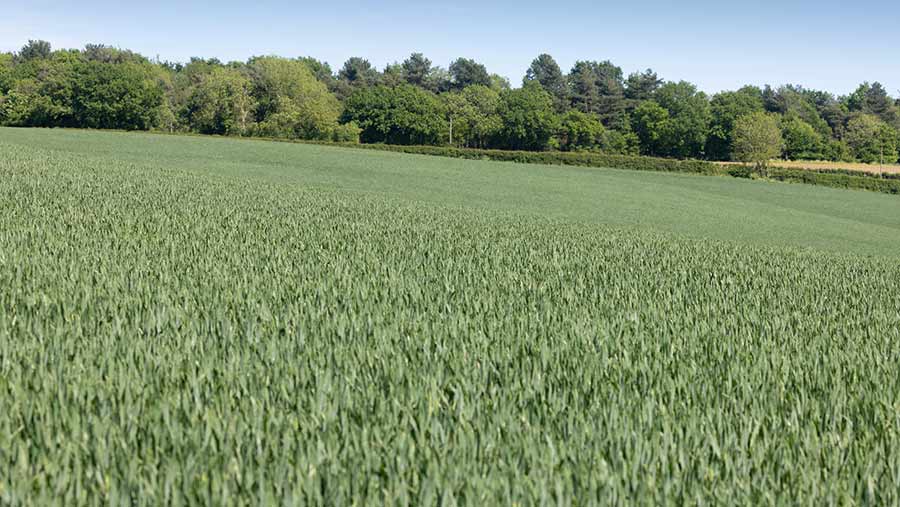UK feed wheat futures prices drop as global market slides
 © Tim Scrivener
© Tim Scrivener Wheat markets have fallen back in the last week as harvest begins in some northern hemisphere countries.
UK markets continue to be influenced by wider global trends and both Chicago and Paris wheat futures had declines in the past week.
November 2022 UK feed wheat futures opened at £280/t on 24 June, down from £311.3/t on 16 June.
See also: Analysis: What makes top arable farms more profitable?
Crop conditions in the UK are showing promise, with 19% of winter wheat classed as excellent and 63% classed as good on 21 June, according to the latest industry crop development figures.
Spring wheat was classed as 5% excellent and 66% good, on average, across all regions of the UK.
There was a degree of regional variation with the North and Wales generally faring better, while conditions in the South West fell slightly below the average.
Global wheat markets
Chicago wheat futures have also fallen. September 2022 wheat futures dropped by $51.9/t (£44.24/t) in the past week to $348.75/t (£281.63/t) on 23 June.
Harvests are now getting underway in many regions in the northern hemisphere, including the US, France and Russia.
Jonathan Lane, head of grain trading at ADM, said: “The rapid pace of the US winter wheat harvest has helped ease markets on a fundamental level.
“About 25% of the area has been cut, about 10% ahead of last year, as the dry weather allows the southern states to make cracking progress.”
Anthony Speight, senior analyst at the AHDB, said harvest is now also underway in the EU, with the heatwave in southern regions in France accelerating the winter barley harvest.
“Initial yields are reportedly down, because of the spring drought. A clearer national picture will become apparent once more northern French regions begin harvesting,” he said.
Russia is expected to have a large exportable surplus of wheat this year. The Russian wheat harvest is just beginning, and Russian consultancy firm SovEcon has estimated a record high crop of 89.6m tonnes.
Outlook
Vikki Campbell, AHDB arable market specialist manager, outlined harvest pressures, US exports, fertiliser availability, recession concerns and Ukrainian grain corridors as factors that are currently putting pressure on prices.
Ms Campbell said: “With all these factors in play, price volatility looks set to remain on the cards.
“The war in Ukraine is providing the floor for the market, but if the northern hemisphere harvest continues this pace and demand remains subdued, we may well see any significant price increases capped.”
